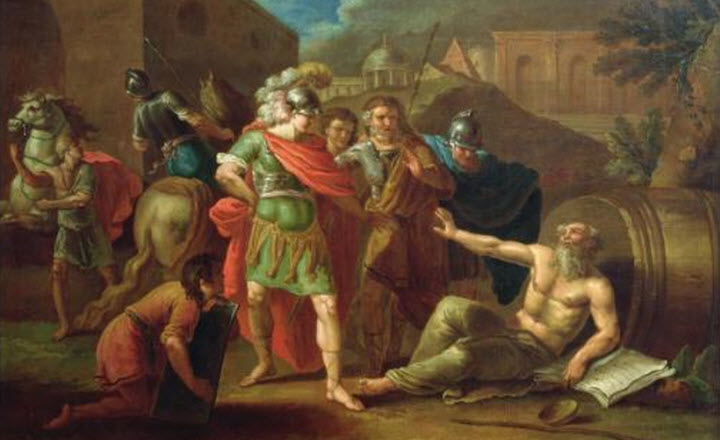

The Diogenes series of tapestries which was almost exclusively of English origin was originally designed at the Mortlake workshop in the 1662-1692 and copied later by Soho workshops.

NOTWITHSTANDING THIS REPORT OR ANY DISCUSSIONS CONCERNING A LOT, ALL LOTS ARE OFFERED AND SOLD AS IS" IN ACCORDANCE WITH THE CONDITIONS OF BUSINESS PRINTED IN THE SALE CATALOGUE." Prospective buyers should also refer to any Important Notices regarding this sale, which are printed in the Sale Catalogue. Prospective buyers should inspect each lot to satisfy themselves as to condition and must understand that any statement made by Sotheby's is merely a subjective, qualified opinion.
Diogenes and alexander professional#
Since we are not professional conservators or restorers, we urge you to consult with a restorer or conservator of your choice who will be better able to provide a detailed, professional report.

If you would like detailed photographs of the tapestry, please contact the department directly on 02 (or response to your inquiry, we are pleased to provide you with a general report of the condition of the property described above. The Diogenes series is also interesting in subject matter, and in being of English manufacture. The charm is in the scale of the figures and the setting, and the dimensions of the tapestry, not being too high. Splits can be consolidated when re-lined. This 18th century tapestry has some repairs and needs some attention. There are as a result some minor horizontal splits in the sky and light areas, which will need some attention for example to the light area in the foreground beneath the feet of the figures and near the border there are small splits that in this area of old weakness. Commensurate with age there are also weaknesses in the areas of light highlights in places. There are some repairs in areas, for example to the brown areas in places, where there has been oxidisation in the past to darker brown, this is commensurate with age for example the brown in the inside of the tub, and the brown shadow between the foliage on the far right near the columns. There is a straight vertical cut and join to the far left of the tapestry, down the inside edge of the border, which is only noticeable on close inspection. Even and balanced colour to the tapestries overall. It is recommended that Velcro is added for hanging purposes in the future.Ĭolours of the images in the catalogue are a too light overall, especially the light highlights, which look a little strident and in reality they are darker tones. The tapestry has an old linen lining on the reverse attached on all edges, and with metal press-studs added to all sides, for attaching to the wall in the past. Woven with the philosopher and cynic Diogenes of Sinope, seated beside the barrel in which he lived having renounced all his possessions, with Alexander standing before him in armoured breastplate and feathered helmet, with his attendants looking on and a small boy holding up Alexander's shield, Diogenes is gesturing to Alexander to stand out of his light, set on the edge of a woodland with classical carved marble and other fragments and columns, some standing, within the trees, with distant landscape to the left with town on the hillside within a distinctive four-sided exuberant floral border, the sides with hollowed-out 'sandstone' pillars, on a brown ground, the horizontal borders with flowers and foliage and interspersed curves of sandstone, with a narrow bead-and-reel inner border, both with a sculptural scroll surrounded cabochon (once centred), the larger top border cabochon with faintly visible Latin inscription, ' Sensit Alexander, testa quum vidit in illa magnum habitatorem, quanto felicior, hic, qui nil cuperet, quam qui totum sibi posceret orbem’ (Alexander, when he saw in that urn its great inhabitant, felt how much happier was he who desired nothing, than one who demanded the whole world for himself), the lower border with a blind lower border cabochon


 0 kommentar(er)
0 kommentar(er)
